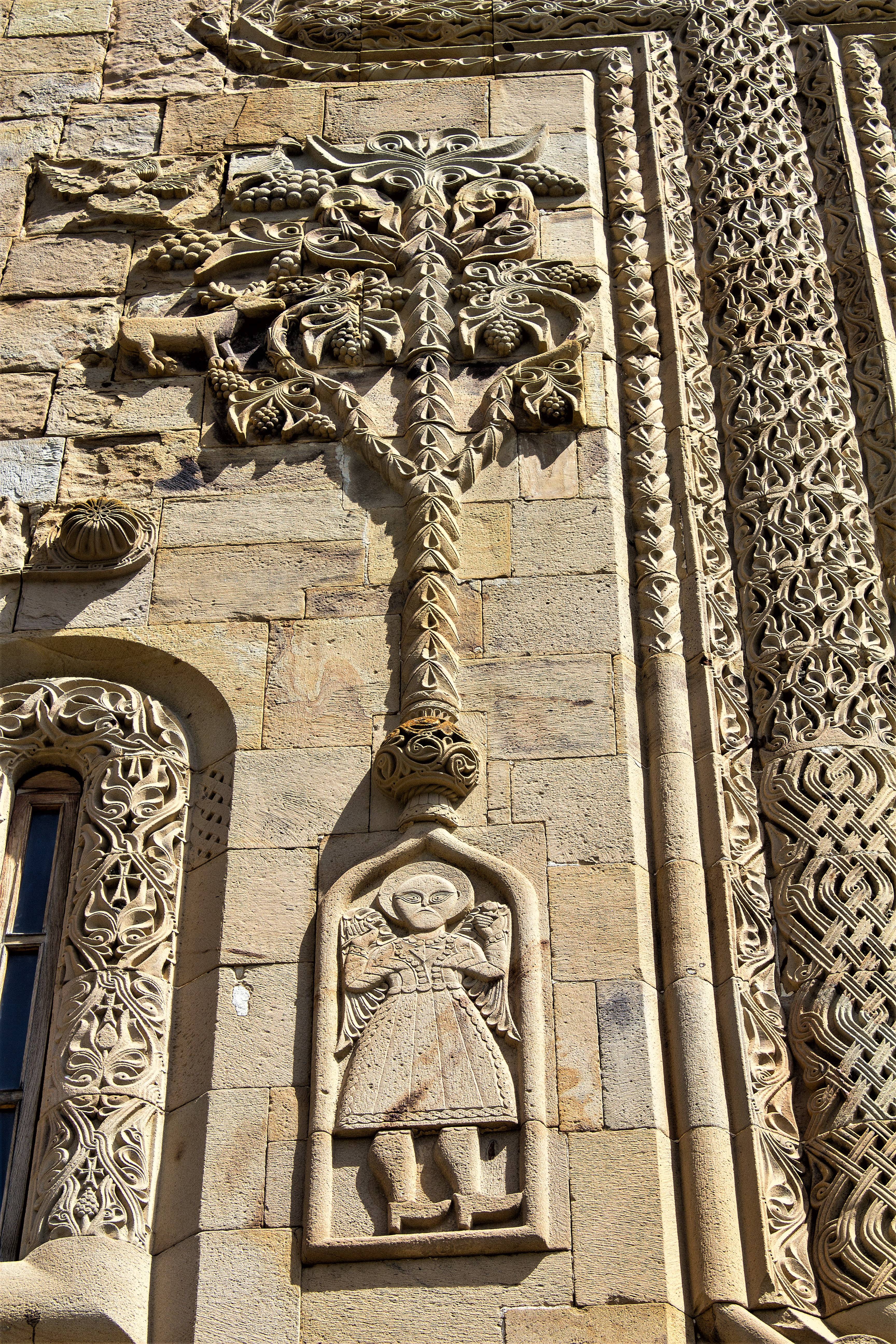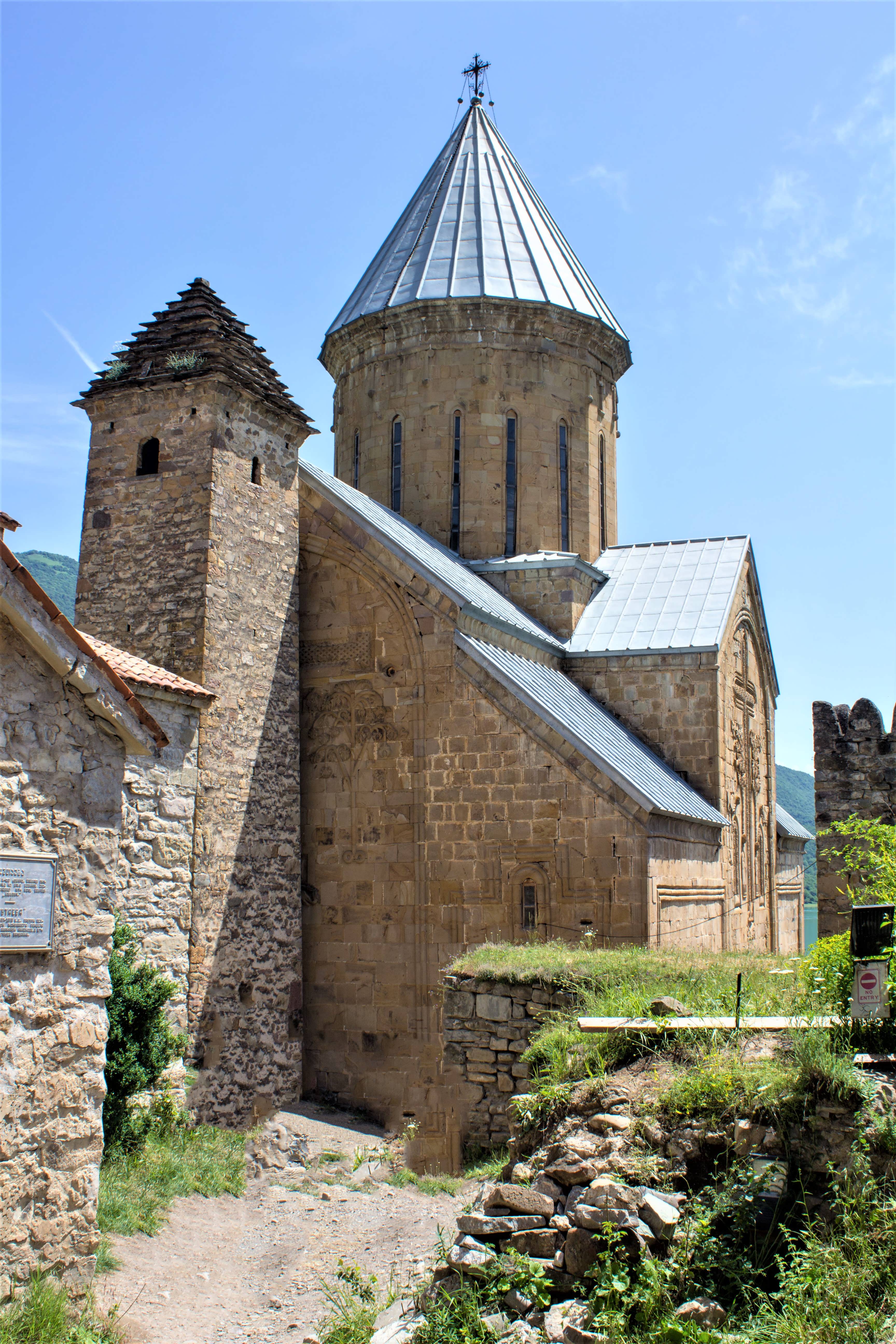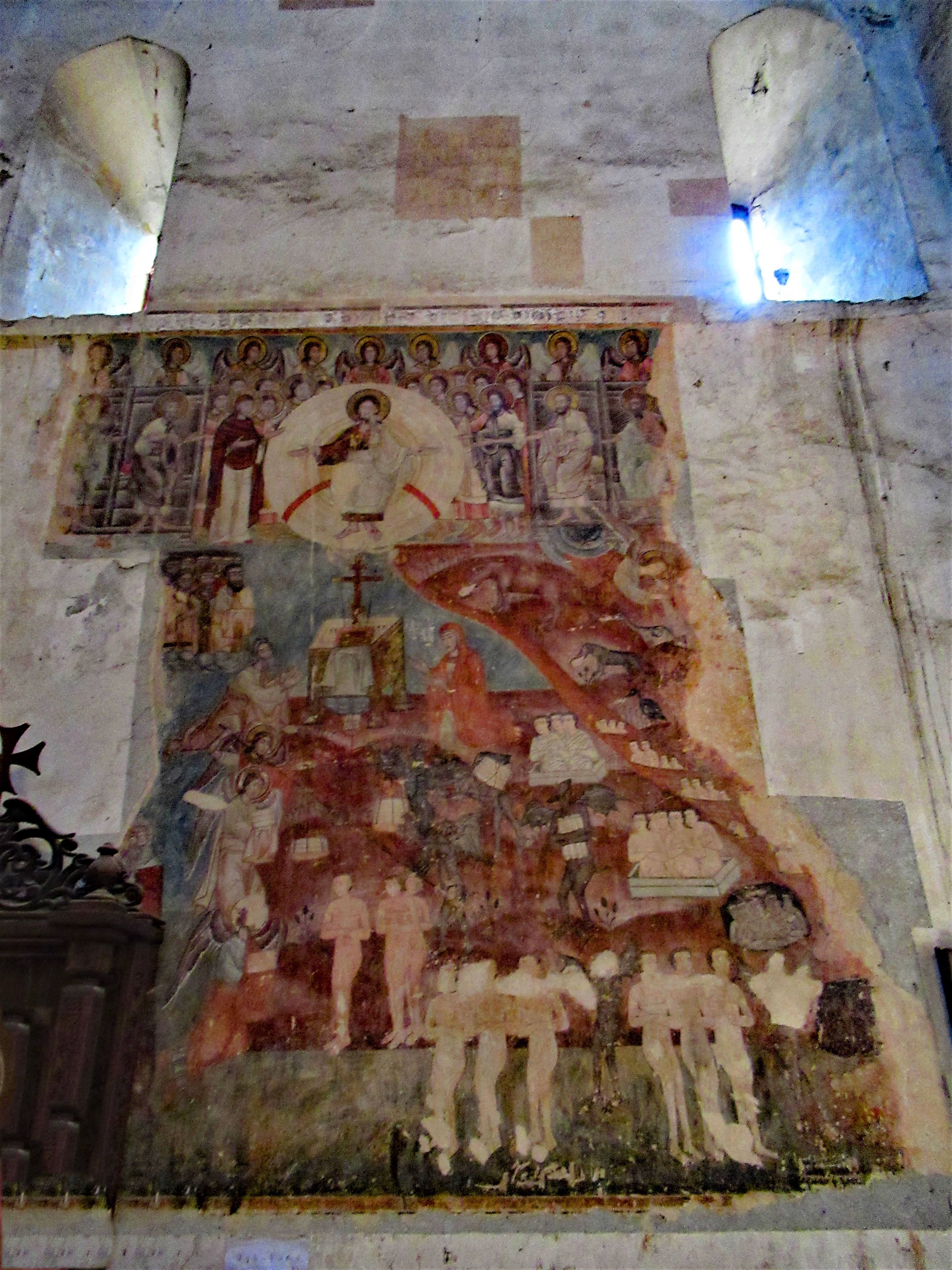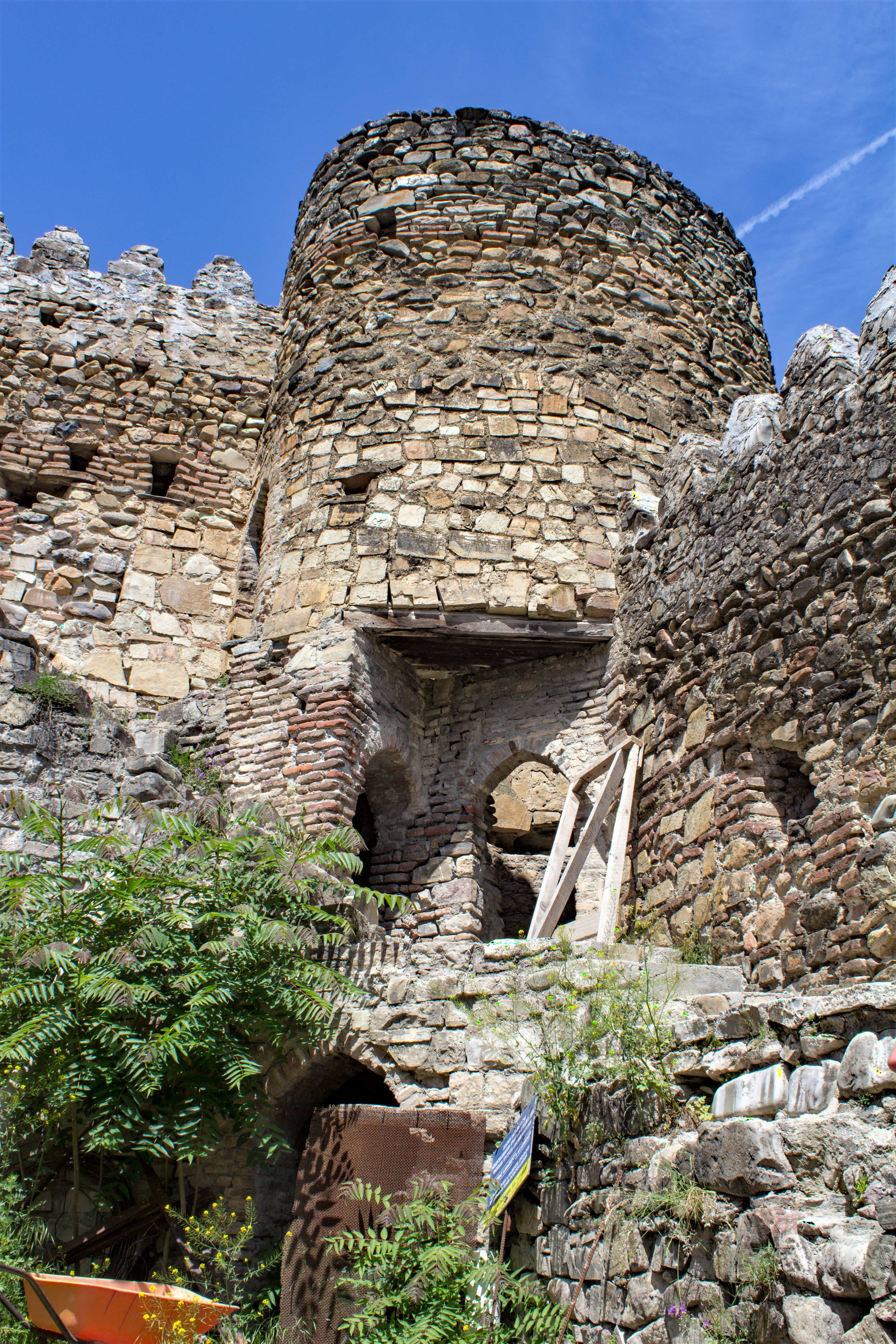The town of Ananuri is situated on the Georgian Military Highway, 70km north of the capital Tbilisi. It is on UNESCOs tentative list and has a fortress said to be a classic example of Georgian architecture.
When the castle was under siege, it was undefeated as a secret tunnel led to the river which provided a way to get food and water to those who had taken refuge there. However, the enemy finally captured a woman named Ana, who was from Nuri, and tortured her to reveal the tunnel’s location, but she chose to die rather than giving the secret away. Hence the castle was called Ananuri, and she became a legend.
Within the fortress there were two churches.
Firstly, the larger, the Assumption Church, built in 1689, had wonderful intricate stone carvings in the sandstone of the exterior walls including ancient script, animals including dragons and a large grapevine cross on the south wall.
It was a hot day, and the quiet, cool church was a welcome relief from the heat. Although some of the walls were bare, there were several vivid 17th and 18th century frescoes which had been rediscovered after being whitewashed by the Soviets. This included the large Last Judgment on the south wall, one of the most important in the country. The inside was of Russian design as the iconostasis had three icons on either side and a row above.
The second and older Church of the Virgin, was built of brick and dated back to the first half of the 17th century. The interior was undecorated, and a tall square Chechen tower built so close it obliterated some of the stone carvings on the outside.
The fortress wall and towers could be walked along and overlooked the Zhinvali Reservoir created by a dam at the confluence of Pshavi (black) Aragvi and Mtiuleti (white) Aragvi rivers. Two villages were said to have been lost in the building of the dam.











